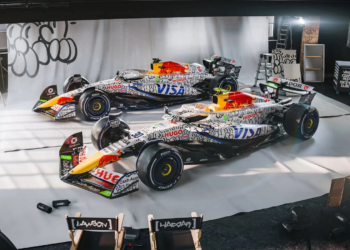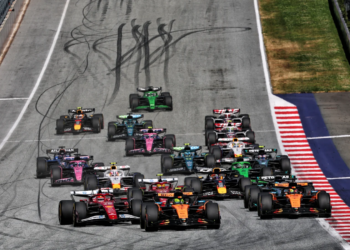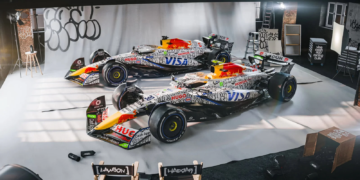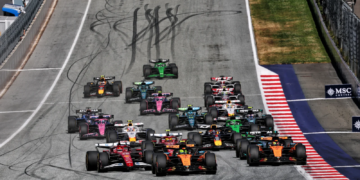After Ferrari, in 2020 one of the teams that has certainly underwhelmed in terms of performance is Red Bull which, with the RB16, hoped to compete at least on par with the Mercedes W11.
After the encouraging pre-season testing in February, expectations for the Red Bull RB16 were high. The single-seater, which in some ways marked a breaking point with its previous cars, featured a significantly improved Honda power unit and more extreme aerodynamics. Adrian Newey’s 2020 car had the goal of competing on an equal footing with Mercedes with the title outlined as an ambition for Max Verstappen.
Many of the solutions adopted by Newey on the 2020 Red Bull were innovative for the team, among these being the adoption of a narrow nose, inspired by Mercedes’ design, with an even more sophisticated cape compared to their opponents.
With the aim of reducing drag and increasing the air flow between the inner wheel and the frame, Red Bull worked hard on the Mercedes-style solution, which Newey then reinterpreted for his car, with further modifications. In the outermost area of the cape, that is the flow diverter that is in the lower part of the nose, a vertical aerodynamic profile was added in the second week of testing to increase the outwash on the sides of the chassis.
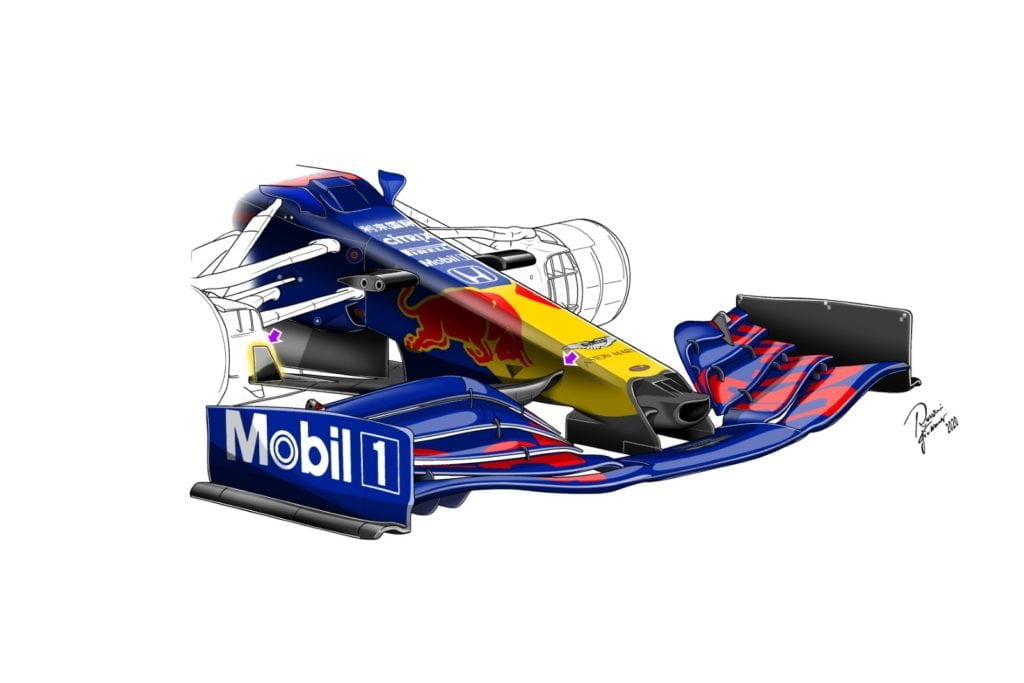 In addition to the narrow nose, a lot of work has been done on the front suspension for the RB16 project, completely revised compared to the old RB15 of 2019. Compared to last year’s car, Newey has moved the multi-link solution (i.e. triangle arms anchored in separate points of the hub carrier) to the lower triangle. But the main and only novelty within the circus is the retraction of the steering column, with the tie rod that is substantially in the center between the lower and upper triangles. Moreover, as we see in the illustration below, the lower triangle has the front arm that goes from one side of the frame to the other, a solution that has not been seen in F1 for some time. All a restyling of the geometries to reduce the front section of the frame (within the limits of the regulation) to accommodate the narrow nose, and provide a wider section to the S-Duct channel.
In addition to the narrow nose, a lot of work has been done on the front suspension for the RB16 project, completely revised compared to the old RB15 of 2019. Compared to last year’s car, Newey has moved the multi-link solution (i.e. triangle arms anchored in separate points of the hub carrier) to the lower triangle. But the main and only novelty within the circus is the retraction of the steering column, with the tie rod that is substantially in the center between the lower and upper triangles. Moreover, as we see in the illustration below, the lower triangle has the front arm that goes from one side of the frame to the other, a solution that has not been seen in F1 for some time. All a restyling of the geometries to reduce the front section of the frame (within the limits of the regulation) to accommodate the narrow nose, and provide a wider section to the S-Duct channel.
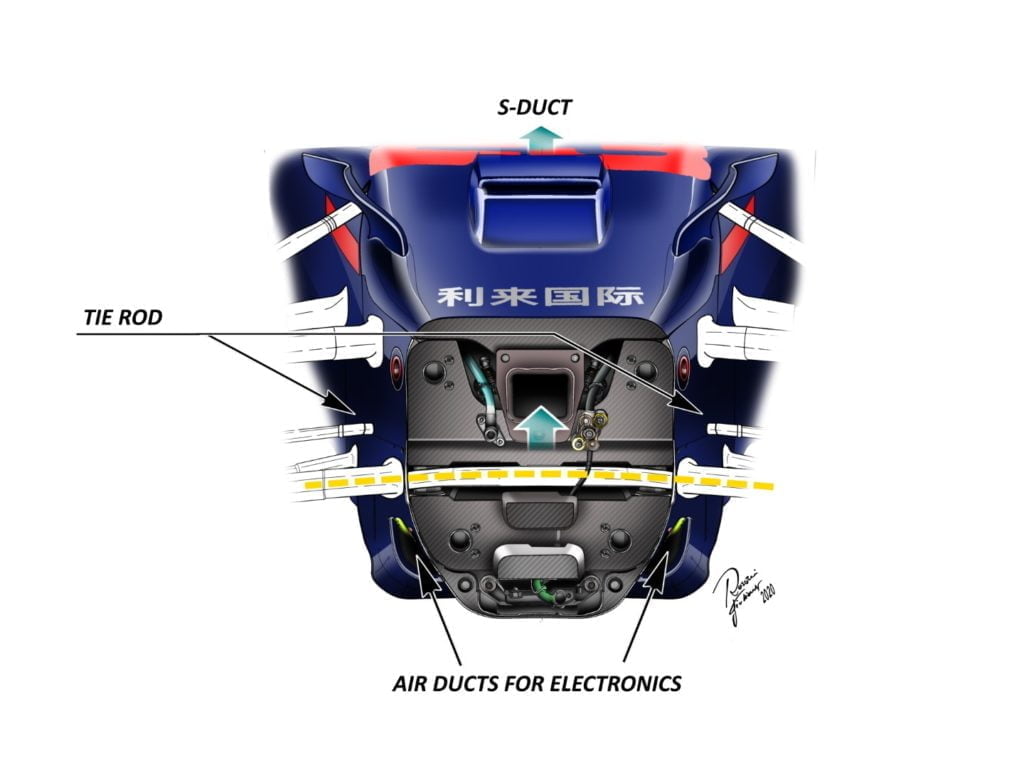
From the first race in Austria, however, it was possible to see how Mercedes has further raised the bar in this troubled 2020 season, bringing a W11 that, between DAS, an exceptional power unit, and superb chassis qualities, once again stole the show from its competitors. The RB16 proved to be a car still subject to reliability problems and a car that only Max Verstappen was able to exploit to its limits. Alexander Albon has spent much of the year behind Verstappen, in all metrics, and holds only ninth in the championship. It has also been dealt a blow by the impending exit of Honda at the end of 2021 and is still striving for a long-term solution.
Red Bull has been introducing innovations on the RB16 since the beginning of the season, with minor aerodynamic updates almost at every grand prix. In the first two rounds in Austria, at the beginning of July, technical innovations concerned the floor, to which vortex generators were added along the central and rear part, and a nose with closer pylons.
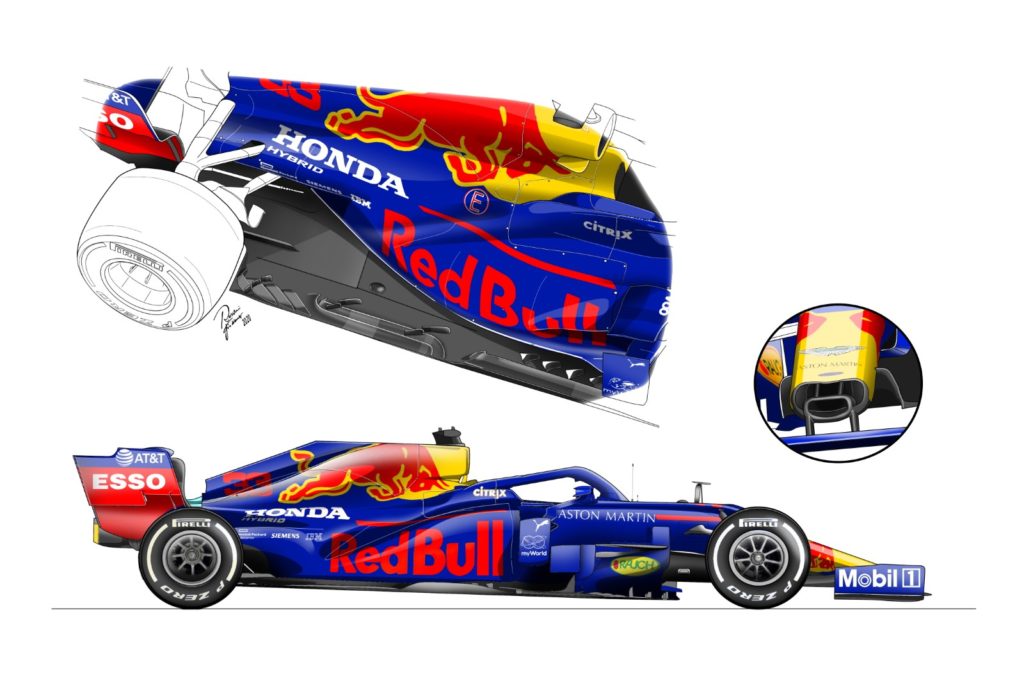 Also in Austria on the RB16 a vertical bulkhead of the rear wing was used, and then maintained during the season, which is markedly different from the standard solution of previous years. The new endplate was inspired by a solution already present on Haas’ VF-19 in 2019, with the implementation of a series of twisted S-shaped blowholes, which channel the turbulence induced by the rolling of the rear wheels in the inner-lower area of the rear wing. The bulkhead in the upper outer edge has also been modified, which has a stepped shape, and no longer a curved profile. It is also interesting to note that Red Bull has often adopted a spoon rear wing profile this season, not least at the Emilia Romagna GP. In the illustration below, we see the classic and spoon rear wing layout, along with the new endplate introduced since Austria.
Also in Austria on the RB16 a vertical bulkhead of the rear wing was used, and then maintained during the season, which is markedly different from the standard solution of previous years. The new endplate was inspired by a solution already present on Haas’ VF-19 in 2019, with the implementation of a series of twisted S-shaped blowholes, which channel the turbulence induced by the rolling of the rear wheels in the inner-lower area of the rear wing. The bulkhead in the upper outer edge has also been modified, which has a stepped shape, and no longer a curved profile. It is also interesting to note that Red Bull has often adopted a spoon rear wing profile this season, not least at the Emilia Romagna GP. In the illustration below, we see the classic and spoon rear wing layout, along with the new endplate introduced since Austria.
 During the course of the season, Red Bull has practically set aside the nose from the narrower pillars, while the floor has been modified again at Mugello, with the long tracks that have given way to a series of 45-degree slots, to bring air under the bottom.
During the course of the season, Red Bull has practically set aside the nose from the narrower pillars, while the floor has been modified again at Mugello, with the long tracks that have given way to a series of 45-degree slots, to bring air under the bottom.

Newey has worked a lot on the cooling intakes for the power unit and electronics in view of the numerous summer races close together, introducing a series of shapes of air intakes for cooling that is different from the more conventional solutions. During the last few races, a large air intake on the sides alternated with the classic closed bodywork solution of the RB16. In the detail of the drawing below, we can also observe the layout of the barge boards, with the elements on the sides of the radiator outlets that have been modified during the tests, and which have a useful shape to channel the air flow adhering to the body of the car, making the aerodynamics of the RB16 work.

But Newey leaves nothing to chance, and many of the innovations brought from race to race on Red Bull’s RB16 also concerns micro-aerodynamics: for the Eifel round at the Nurburgring, Red Bull brought a different mirror support to the track, with a modification in the area where the support is anchored to the frame. The new specification has a more angular shape, practically forming a right angle, while in the old solution the support (which also acts as an aerodynamic element) had a more rounded shape. For several events a small aerodynamic profile has been installed on the Halo to send more air to the top of the car. Along with it, a small air vent is located right on the sides of the passenger compartment.

One of the most important changes seen at Red Bull this season probably concerns the rear suspension, which at the Nurburgring was modified with the addition of a blow inside the upright bracket. This allows the bracket to also work in the aerodynamic field, with the blowing that allows the passage of air, which will then hit the aerodynamic profiles in the rear part of the brake sockets, and the outer part of the rear wing endplate.

This solution also comes from Mercedes which, already with the W10, had adopted this blowing to the limit of the regulation in 2019. In Melbourne Red Bull had asked the FIA to clarify the suspension of the Mercedes and the Racing Point RP20, in how much the blowing could have the purpose of bringing more air to the rim and brake disc, thus resulting in a real cooling intake that extended beyond the maximum measurements allowed by the regulations. The FIA had asked Mercedes and Racing Point to partially “plug” the bracket hole, thus sanctioning a “technical victory” for Christian Horner’s team.




